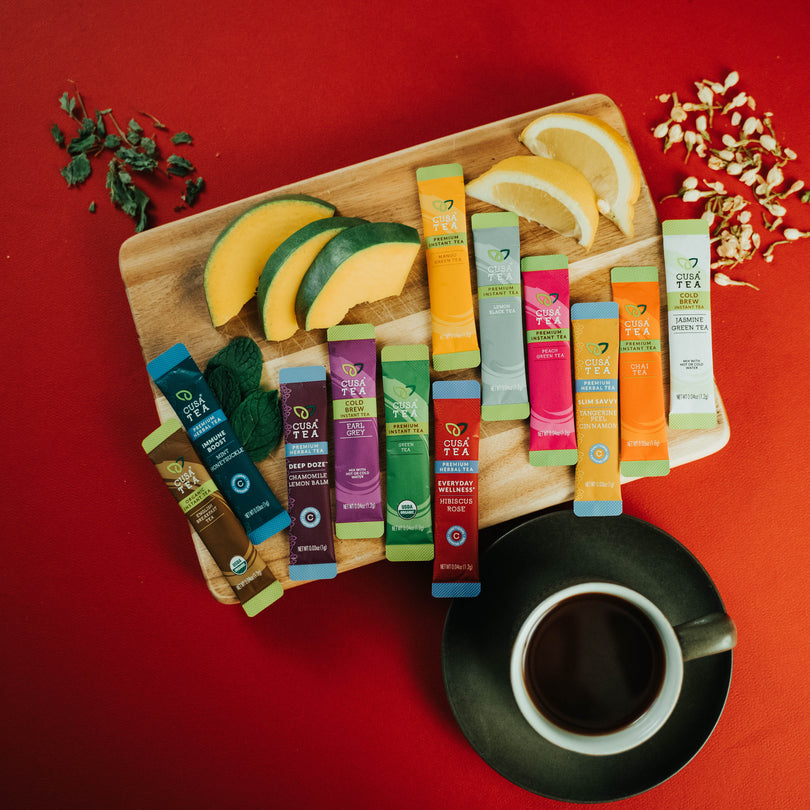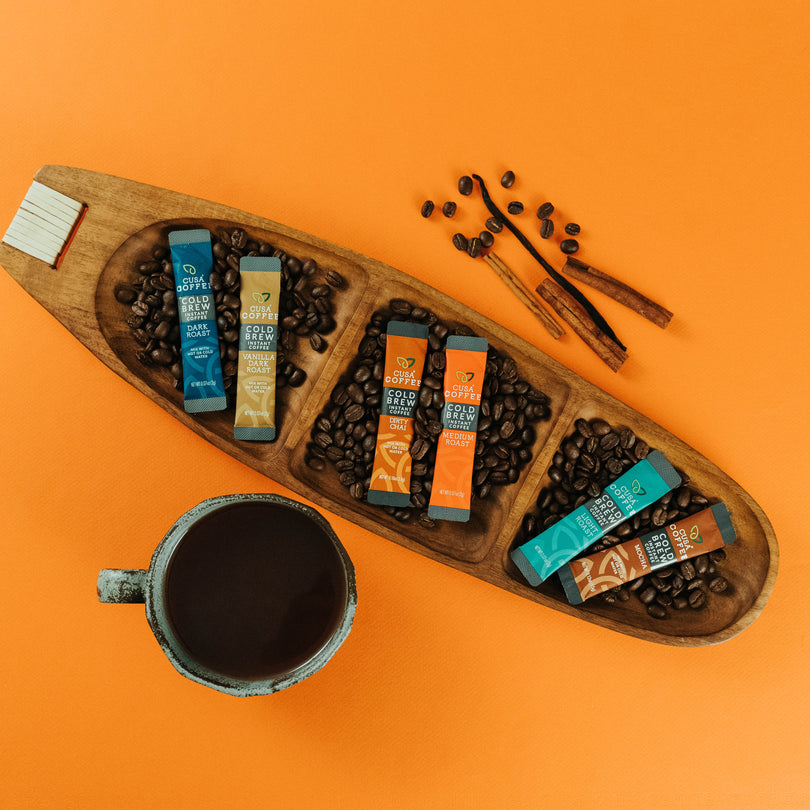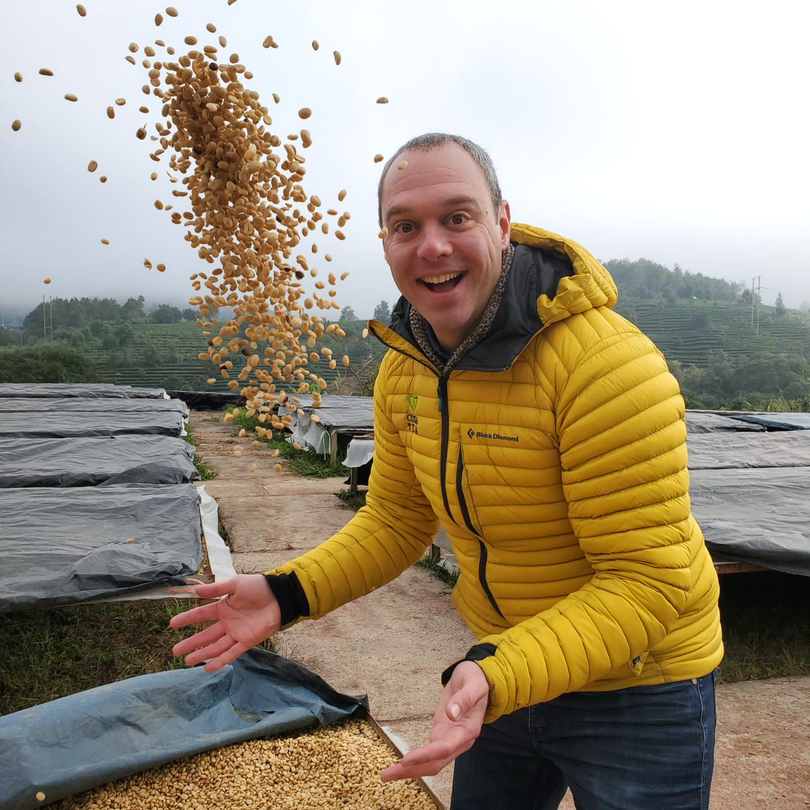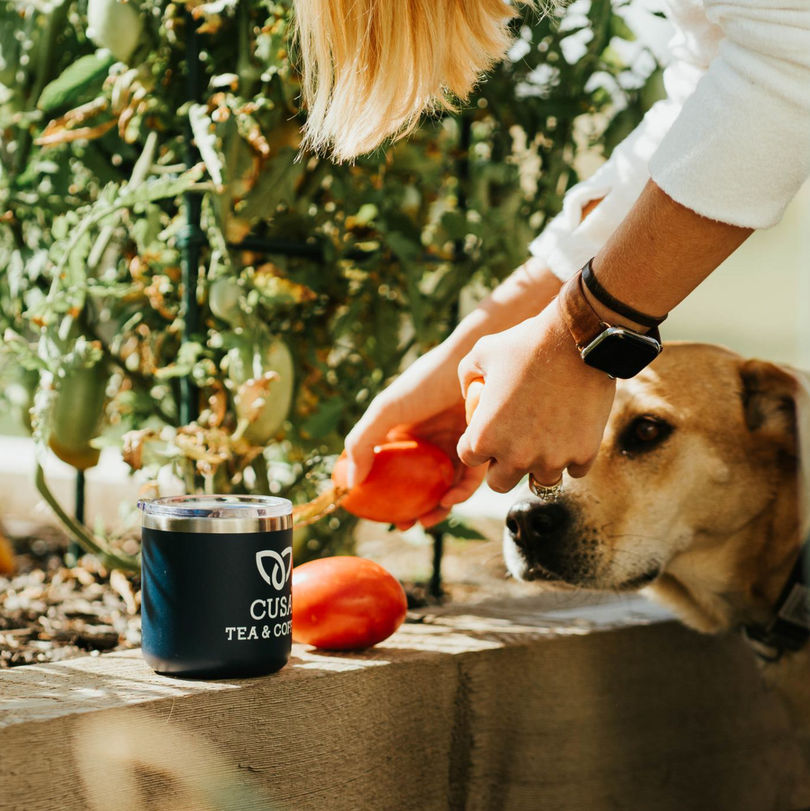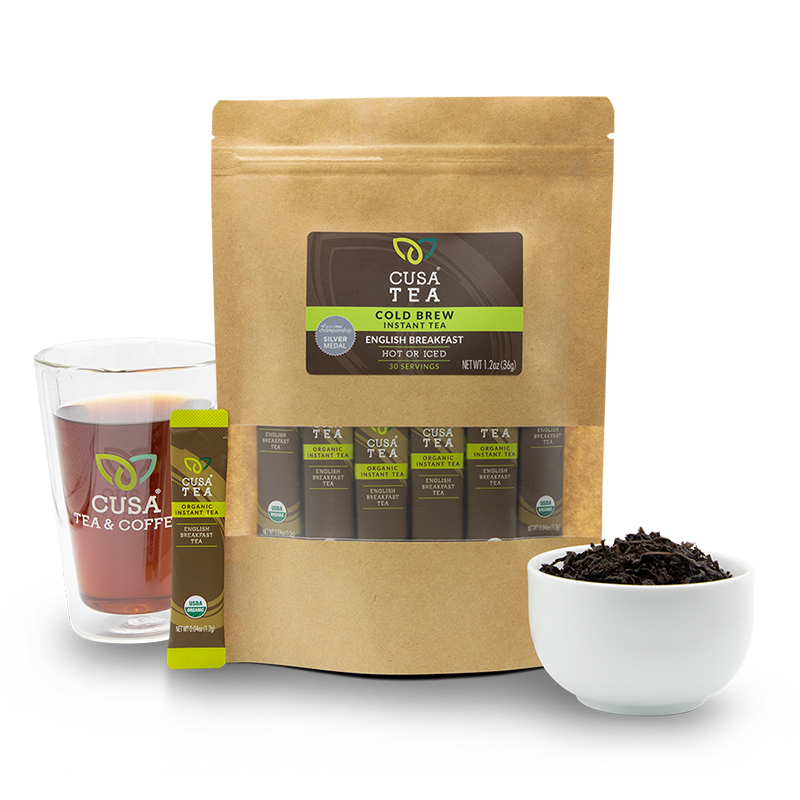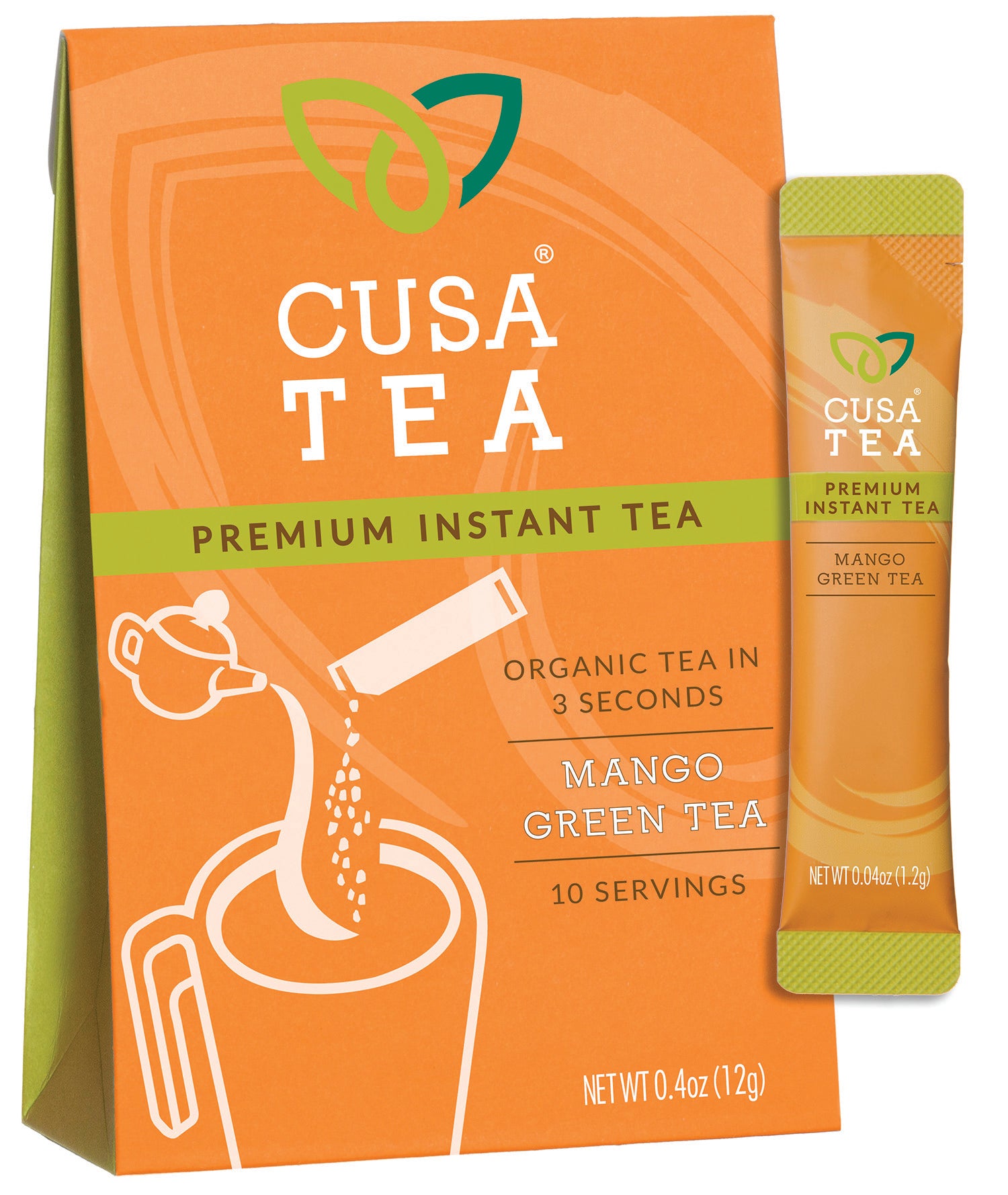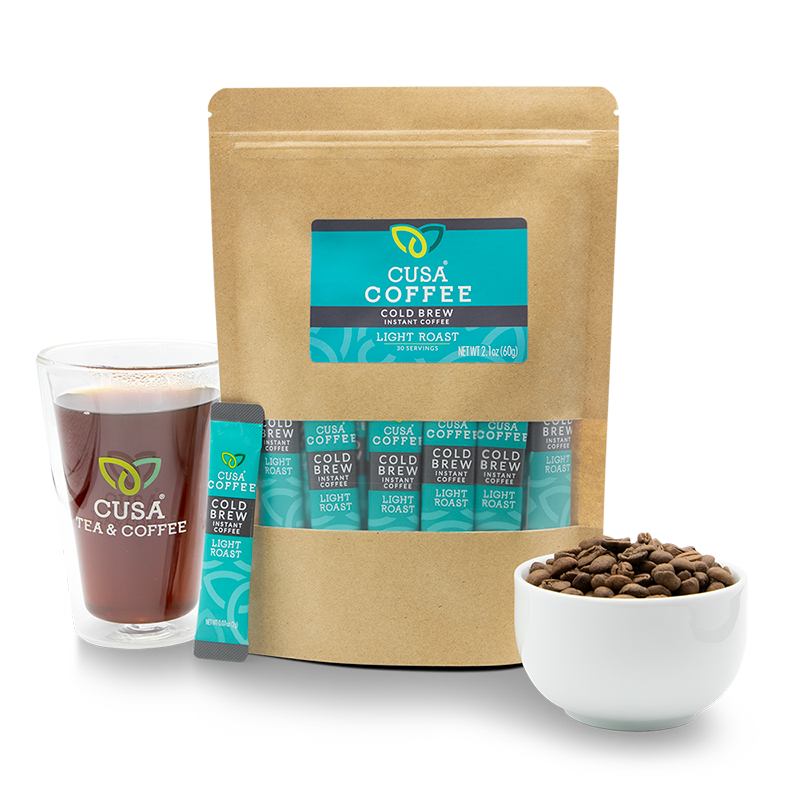Brain juice. Morning jolt. Liquid energy. There are hundreds of terms and phrases for coffee, all pointing to its ubiquitous influence in our society. About 62% of Americans drink coffee daily, so it’s no wonder coffee has an almost revered place in our lives. [1]
Overall, coffee has been shown to have some health benefits like mental and athletic performance improvement, elevated mood, and it may even help prevent liver cancer! [2] But it can also be an entry point for toxic mold and yeast into the system if we’re not careful about sourcing the right coffee beans and choosing how we prepare them.
The vast majority of coffee drinkers prepare it at home, but did you know that a National Science Foundation study found that 50% of household coffee machines contain mold and yeast? And another study found that 52% of tested coffee beans contained mold. [3]

IS COFFEE GOOD OR BAD?
Let’s take a step back and look at the age-old question: is coffee good for us, or bad for us? Of course, there are compelling reasons humans love coffee so much. As mentioned before, it can improve mental and athletic performance and elevate mood - effects that tend to make us feel “I’ve got this”.
Although there’s plenty of research on coffee’s positive effects on our lives, doesn’t it seem like just as often as you learn that coffee is good for you, you read or see some other study indicating that coffee is bad for you? Reading these contradictory yet science-backed assessments can make it difficult to understand their implications for our own lives. Sometimes, I just want someone to tell me definitively: so, which one is it - good or bad?
Science is now generally in agreement that black coffee, free of toxic mold and yeast, is beneficial to us. Great news, right? On the other hand, if we introduce mold and yeast through our coffee makers and/or beans and load up our coffee with sugars and artificial flavorings, it can have negative health effects.
This article will focus mainly on one - very important - question to ask: how clean is your coffee, your method of storing it and your process for making it? Because when it comes to mold and mycotoxins - compounds produced from mold - the biggest culprit indeed may not be coffee itself, but what’s growing on it. And unfortunately, a lot of what affects the quality and cleanliness of your coffee is out of your control, which makes understanding where your coffee comes from very, very important.
WHAT ARE MYCOTOXINS?
Mycotoxins are compounds produced from mold. They are the main reason mold can be so bad for our health. Often the effects of coffee that we consider “bad” are not from the coffee bean itself, but rather mold growing on the coffee beans or inside your coffee brewer. Mold is a fungus, and is actually on a lot of our foods, even before they go bad. In small amounts, it’s not a big deal, but when consumed daily or in large quantities, it can have a big effect. Usually mold is easy to spot on foods, but not always. When it comes to coffee, especially, mold can be very difficult to identify.
Mycotoxins are just what the “toxin” in their name implies - they are essentially poison. They can result in neurotoxicity, or brain and nervous system damage. The worst of these is ochratoxin A (OTA), and it’s a known possible carcinogen, as recognized by the USDA [4]. It can cause oxidative stress in the body [5] and can lead to symptoms like fatigue, brain fog, immune system suppression, memory problems, dizziness and hair loss. And over time, can damage your DNA and compromise your immune system, potentially causing liver cancer, kidney cancer and neurodegenerative diseases. It’s worth repeating that 52% of all coffee beans tested contained this mycotoxin!

BUT WHAT IF I STORE MY COFFEE WELL?
You might follow all the best practices for storing coffee at home or keeping your coffee maker or equipment clean, and still be consuming mold with your coffee. That’s because mold is introduced early on in the supply chain, during processes you have no control over.
Mold tends to grow when it’s moist, and most coffee comes from the tropics, where it’s naturally moist - all the time. The two main methods of preparing beans for roasting - the “natural process” and the “wet process” - are both imperfect when it comes to mold contamination. The natural process allows beans to sit outside where they can collect debris, animal feces and mold. The wet process involved putting beans in large vats of water to let beans spoil slightly (i.e. ferment), so it’s easier to remove the outer parts of the bean. Furthermore, coffee’s slight acidity also helps mold grow, since mold thrives in a pH range of 6-7 and coffee has a pH of 5.2-6.9. [6]
Put all these factors together, and the result is that coffees that have a long storage process before roasting tend to have higher concentrations of mycotoxins, since mold has had more time to grow in its ideal environment. And unfortunately, roasting does not simply remove mycotoxins once they are present. Roasting coffee with mycotoxins leads to contamination of equipment, which in turn contaminates future batches, leading to a cycle of consistent contamination during multiple parts of the storing and roasting process. Ugh!

Arabica beans, of higher quality, are typically less moldy than robusta beans (what you tend to find in cheap coffee), simply due to their more premium nature and how they are better treated. However, bean type itself is not what determines mold content, and mold can be present on either type of bean due to all the other factors during harvesting, storage, processing and roasting.
Unfortunately, decaf coffee isn’t safe, either. In fact, it can be even worse, because caffeine itself is a natural antifungal defense mechanism for the coffee plant. When you remove the caffeine, the beans are defenseless. Thus, it’s no wonder why decaf coffee typically has higher OTA content.
WHAT CAN I DO ABOUT IT?
It all seems a bit futile, doesn’t it? Before you give up all hope and swear you’re going to quit drinking coffee forever, rest easy. We live in the information age, and it’s easier than ever for consumers to learn about the agricultural processes of their coffee suppliers. Although you can’t control how your coffee is stored and roasted, you can buy coffee from producers that ensure cleanliness and quality of beans throughout the entire process.
Thankfully there is testing for mycotoxins available that can help guide you when purchasing coffee. It takes a bit of research, but the coffee brands that care about this issue will make it clear.
When we first developed our Cusa Coffee line, we got our coffee independently tested by a third party for mycotoxins, and as we have done with toxic heavy metals testing in the past, are thrilled to publicly share our test results, which show that our coffees do not contain mycotoxins and are clean and safe to drink.


